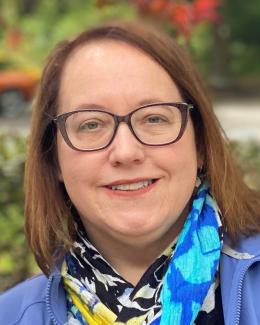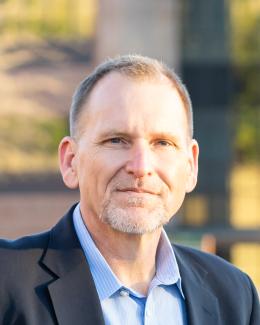December 4, 2017 – Some engineers are attracted to fuels and engine research out of a love of cars. For Robert Wagner, however, enthusiasm for combustion science and chaos theory drew him to this area of research at Oak Ridge National Laboratory.
After years of delivering breakthroughs for cleaner, more efficient vehicles, Wagner is now director of the National Transportation Research Center (NTRC), Department of Energy’s only user facility dedicated to transportation technologies. In that role, Wagner provides strategic leadership to the NTRC, including developing external collaborations with industry, universities, and other national laboratories in coordination with the Sustainable Transportation Program to ensure the success and continued growth of ORNL’s transportation research.
The transition has been a natural one for the engineer, who has always enjoyed the collaborative nature of his work at the lab. In addition to his role as NTRC director, Wagner is co-lead for the DOE Co-Optimization of Fuels and Engines Initiative. This first-of-its-kind effort brings together the unique research and development capabilities of nine national laboratories, 10 universities, and numerous industry stakeholders to accelerate the introduction of efficient, clean, affordable, and scalable high-performance fuels and engines.
“I love building teams and opportunities,” Wagner said. “I’m usually the person in the background working to bring people together to hammer out new concepts and ideas so we can accomplish big things.”
Wagner grew up in an environment where engineering was second nature, with parents who owned a real estate business and a campground in Missouri. “My brothers and I were very hands-on helping our dad keep everything maintained,” Wagner recalls. His older brother, John, a nuclear engineer and currently an associate laboratory director at Idaho National Laboratory, first introduced Wagner to the idea of applying for an internship at ORNL while in college.
Wagner first came to ORNL as a summer intern in 1992, working with his mentor who was pioneering the application of chaos theory and nonlinear dynamics to energy technologies, including internal combustion engines. The experience cemented Wagner’s interest in the work, and he returned to ORNL for successive internships, as a postdoc, and later as full-time staff after earning his doctorate in mechanical engineering from Missouri University of Science and Technology.
Wagner continues to pursue multidisciplinary opportunities that leverage ORNL’s expertise and capabilities in high performance computing, neutron sciences, material sciences, and additive manufacturing to address the challenges of a more sustainable transportation future.
ORNL’s ‘portfolio of science’
“We’re not just unique at ORNL because we have an NTRC or a Spallation Neutron Source or a Titan supercomputer or world-class materials science. I think we’re unique because we have them all. It’s our own portfolio of science. These are all really big achievements by themselves, but when you put them together, we are unmatched by any institution in the world,” he said.
Looking forward, Wagner describes how engine improvements increasingly will be about pushing efficiency to the edge of combustion stability. “My passion and most notable research has been to provide new fundamental insight into combustion dynamics and unstable combustion phenomena in internal combustion engines,” he said. “This also includes the transitioning of fundamental breakthroughs in the combustion process to multi-cylinder engines with real-world hardware, where the challenges increase significantly.”
Wagner was recently elected a fellow of the American Association for the Advancement of Science, which cited his contributions to the fields of combustion and fuel science.
Wagner sees the growth of vehicle electrification as an opportunity to combine the best characteristics of combustion and electrification through hybrid vehicle architectures. He also sees significant opportunity for ORNL in the areas of extreme fast charging, wireless charging, and autonomous vehicles. “The hype cycle with autonomous vehicles is very high, but we’re already seeing pieces of it commonplace in vehicles, like driver assist,” Wagner said.
In the smart mobility area, Wagner notes that automakers are testing numerous prototype autonomous vehicles on American roadways, and those vehicles are generating significant amounts of data. ORNL’s vehicle expertise coupled with the ability to explore these large datasets with unique deep learning tools and supercomputing resources could be game-changing for the industry, he said.
“I also envision a future where vehicles have extreme range—where refueling the vehicle is more of a maintenance interval or happens without driver interaction or knowledge. This will be very important for truly autonomous vehicles. The research at ORNL and ORNL-developed technologies such as wireless charging will be critical to enabling this future.”
ORNL is managed by UT-Battelle for DOE’s Office of Science. The Office of Science is the single largest supporter of basic research in the physical sciences in the United States, and is working to address some of the most pressing challenges of our time. For more information, please visit http://energy.gov/science/.—by Stephanie Seay



